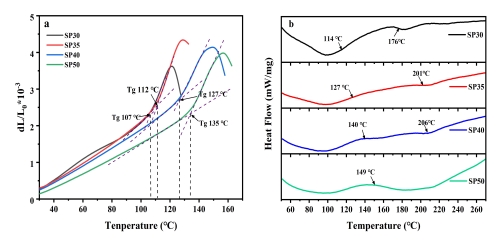Recently, the laboratory of high power laser optical components of Shanghai Institute of Optics and Fine Mechanics (SIOM) of the Chinese Academy of Sciences (CAS) prepared a P-Sn-O-Cl-N glass system at 350 °C and explored its structural properties. Related research results were published in the Journal of Non-Crystalline Solids under the title "Preparation and structure of low-melting-point stannous chlorophosphate containing nitrogen glasses" on June 6, 2022.
Phosphate glass has potential applications in aspheric glass forming, low temperature encapsulation, photonic conversion and organic composite materials due to its low glass transition temperature. Chlorophosphate glass has the combined advantages of phosphate and halide glass, such as high thermal expansion coefficient, strong resistance to devitrification and low phonon energy. However, the melting temperature has a great influence on the formation and properties of low-melting glass, and contemporary studies have not reported the effect of melting temperature on the properties of Sn-P-O-Cl-N glasses prepared below 500 °C.
The research team used the traditional melt extraction cooling method to prepare the P-Sn-O-Cl-N colorless transparent glass system at 500 °C. By comparing the color, transparency and chemical stability of the samples, it was determined that the optimal melting temperature was 350 °C, and the glass exhibited an ultra-low glass transition temperature of <140 °C, and its composition and structure were investigated by infrared, Raman and XPS. Although some researchers have done a small amount of research on this glass before, they are all limited to above 500℃.The transparency, composition and structure of glasses prepared at lower temperatures are significantly different from those above 500°C. Low temperature melting reduces the volatilization of Cl- and NH4+ ions in the batch, thereby lowering the melting point and Tg of the glass.
The new low-melting glass prepared in this study provides new ideas for aspheric shaped glass, matrix glass for perovskite quantum dots, and low-melting functional material-doped glass.

Fig.1 Sn-P-O-Cl-N glass prepared at different temperatures. (Image by SIOM)

Fig.2 Thermal expansion (a) and DSC (b) curves of Sn-P-O-Cl-N glass melted at 350℃. (Image by SIOM)
Article website:
https://doi.org/10.1016/j.jnoncrysol.2022.121739
Contact:
WU Xiufeng
General Administrative Office
Shanghai Institute of Optics and Fine Mechanics, CAS
Email: xfwu@siom.ac.cn
Web: http://english.siom.cas.cn/